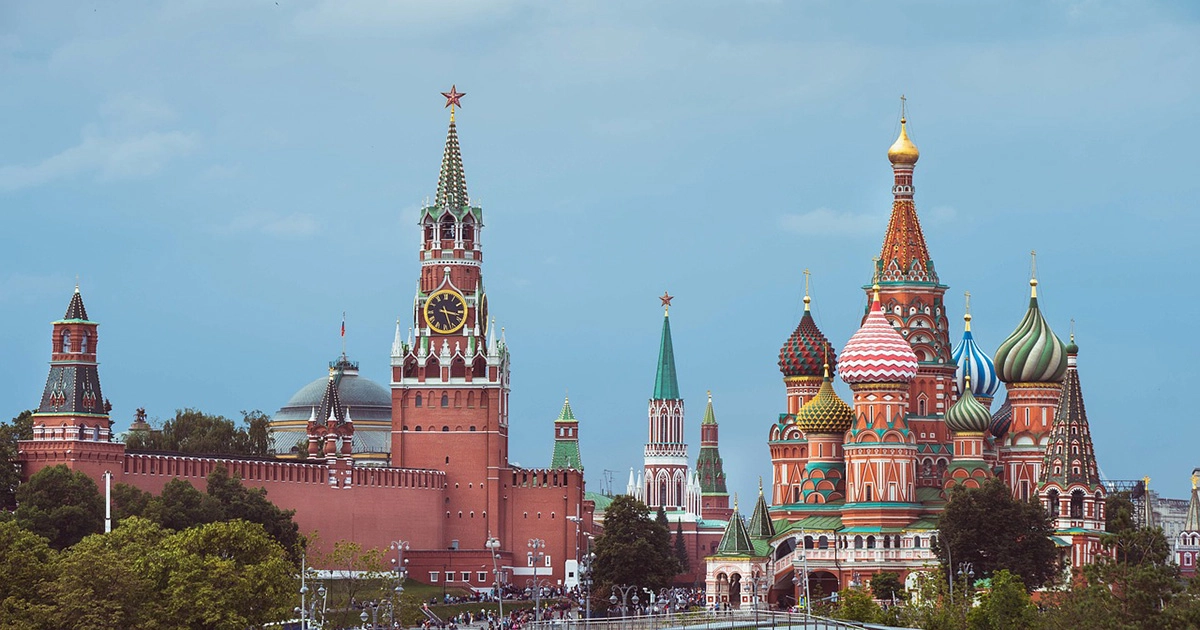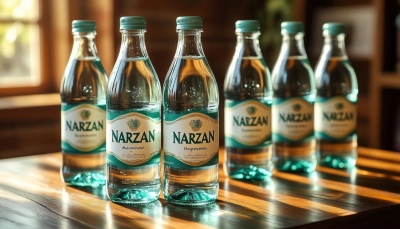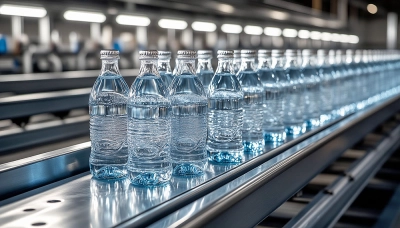Russia
The Russian Federation is an ancient state with a long history and rich culture. It is located in Eastern Europe and Northern Asia and is the largest country in the world by area. Russia has a developed market economy. The bowels of Russia are rich in huge mineral reserves, the most profitable of which are oil and gas, which are exported to many countries of the world.
Russia is a country of big numbers. Its area is 17 million km2, and the population for 2022 is 145,478,097 people. The population density is very unevenly distributed — the vast majority lives in the western part of the country, while the northeastern territories in some areas are not populated at all. From west to east, Russia stretches for 10 thousand kilometers, from north to south — about 4 thousand. The country has 11 time zones. Russia borders on 18 countries, including the United States and Japan by sea.
The capital is located in Moscow, but St. Petersburg is also considered a major center. In total, there are 85 subjects in the state. More than 190 nationalities live in the country. The traditional religions are Orthodox Christianity, Islam, Judaism and Buddhism. Official language is Russian. The economy is mixed, dominated by the industry and service sector. The monetary unit is the Russian ruble.
It is generally accepted that the history of Russia begins with the resettlement of the Eastern Slavs, which took place around the 6th century. It can be divided approximately into seven periods: the most ancient period, the period of Kievan Rus, the period of fragmentation, the period of a unified Russian state, the period of the Russian Empire, the Soviet period and modern history. From the moment the state appeared and until the 20th century, Russia was ruled by two clans: the Rurikoviches and the Romanovs. Monarchical rule ended at the beginning of the 20th century with the advent of Soviet power, after which the USSR was formed, in which Russia was only a part of it. In fact, the Russian Federation as a state has existed since December 26, 1991.
According to the Constitution, which is the fundamental law of the state, Russia is a democratic federal legal state with a republican form of government. The head of state is the President, elected for 6 years. The President is also the Supreme Commander of the Armed Forces of the Russian Federation. As of 2022, Vladimir Putin is president. The second face of the state is Mikhail Mishustin, Prime Minister. The representative and legislative body is the Federal Assembly (Parliament of the Russian Federation), which consists of two chambers: the Federation Council and the State Duma. The executive authority is the Government of the Russian Federation.
Russia's foreign policy is determined by the country's president and carried out by the Russian Ministry of Foreign Affairs. Russia maintains diplomatic relations with 188 UN member states. It also has diplomatic missions in 144 countries. With a Russian foreign passport, you can enter 76 countries of the world without a visa, in 32 countries you can get a visa automatically upon arrival. In other countries, a visa must be obtained in advance. Russia establishes a visa regime with the states of the world on the basis of reciprocity. Russia is also a nuclear power.
The Russian economy ranks 6th among the countries of the world and 2nd among the countries of Europe (after Germany) in terms of GDP in purchasing power parity, which in 2019 exceeded 4.35 trillion US dollars. Russia belongs to the group of countries with a very high level of human development, is a member of the WTO, SCO, BRICS, EAEU and other major integration economic and political unions.
Despite Western sanctions, Russia remains one of the most attractive countries for investment not only in Europe but also in the world. The most "tasty" sectors for financing remain the agro-industrial complex and the high-tech segment, in which our country has been doing well in recent years. In just 20 years, since 1991, more than $2.5 trillion has been invested in the Russian economy. The average exchange rate of the Russian ruble for 2021 is 73.66 rubles per 1 US dollar. The unit of exchange is a penny, one hundredth of a ruble. The issue of money is carried out by the central bank of the country — the Bank of Russia. As of December 2021, the unemployment rate is 4.3%, the employment rate is 59.8%. The nominal average salary of an employee in Russia at the end of 2021 amounted to 57,244 rubles per month.
The largest employer in Russia is the Russian Railways company, which has about 900,000 employees. The largest employer among non-monopoly companies is Rostec with 450,000 employees. The largest employer among private companies is the X5 Group - 340 thousand. The leading sectors of the economy are industry, agriculture and the service sector.
Experts assess the state of the business climate in Russia as satisfactory. Demand estimates have remained stable, according to more than 50% of Russian companies. Positive dynamics was reported by 24.1% of companies. B2B (business to business) and logistics indices also grew. In addition, this year companies have improved the situation with the fulfillment of contractual obligations on their part. At the same time, 29.8% of companies reported that they were able to receive more new orders than in the previous month.
The business climate indicator is positive. After the introduction of sanctions, it was restored, and now it has grown to 10.4%, and short-term expectations in this area are quite optimistic. The oil and gas industry is restructuring logistics and successfully turning to the East. The volume of goods imported into Russia as part of parallel imports will reach $20 billion by the end of the year and will be extended to 2023.
SMEs are confidently occupying business niches left by foreign companies. According to Rosstat, unemployment in Russia in August 2022 dropped to 3.8% from 3.9% in May, June and July, which was the lowest value for the period of observation of this indicator since 1991. Agricultural enterprises have the most positive expectations, taking into account forecasts for a high harvest at the end of the year.
At the moment, investing in fixed assets is considered one of the investment-attractive activities in Russia. Over the past decade, about 314 billion rubles have been invested. Each foreign company can use one of two legal forms to operate on the Russian market: a branch (representative office) or a legal entity specially created in Russia. In the second case, the company is treated as a Russian resident with the corresponding rights and obligations.
The Russian equity market is dominated by state-owned companies. The main shareholders are institutional players. The participation of individual clients in transactions with shares of both state and corporate issuers is growing.
The experts also identified regions with a favorable, practically formed investment climate, with a high share of business activity and rapid growth of economic structures (Moscow, St. Petersburg, Tatarstan, Bashkortostan, Sakha, Kaluga, Moscow, Tula regions, etc.).
Measures to support business and investment are at a decent level. The structure of the state support system is conducive to this. It is vertical in terms of levels of manageability: federal, regional, municipal. Also, over the past 20 years of reforms, all institutional and legal conditions have been created for investors from abroad. Russia has a developed legal base and well-established legislation. The country occupies a worthy place in the world ratings for the protection of property rights and protection of investments. In terms of Doing Business indicators, Russia rises several positions every year and today, for example, it has the best indicator among the BRICS countries.
Previously, the law provided for support measures that continue to operate in 2022. Financial assistance — the possibility of obtaining subsidies, preferential loans and grants. Property measures — the provision of state property and land free of charge or on preferential terms. Guarantee measures provide for sureties and/or independent guarantees so that small and medium-sized businesses can obtain loans, lease equipment and other financial resources. Information and consulting offices offer assistance in retraining personnel.
The Russian government has identified priority business areas that will receive support in the first place in 2022. Among them: agriculture, farming, production of dairy products, vegetables; exporters; domestic IT companies; companies that go to IPO (place securities on the stock exchange); tourism; self-employed citizens.
Another business support structure is the Russian Chamber of Commerce and Industry. This is a voluntary non-state association of entrepreneurs, acting in accordance with a special federal law. It unites more than several hundred territorial chambers of commerce and industry and other associations and associations of Russian entrepreneurs. Its members are commercial and non-profit organizations.
Also in Russia there is an experimental system to support SMEs. It is assumed that the new system will simplify the opening, maintenance and development of business as much as possible. Federal ministries and departments, development institutions, banks and insurance organizations will join it. All of them will exchange the necessary information through a system of interdepartmental electronic interaction.


33,635,324 ¥

44,806,080 ¥
8,961,216 ¥
40,325,472 ¥

62,728,512 ¥









